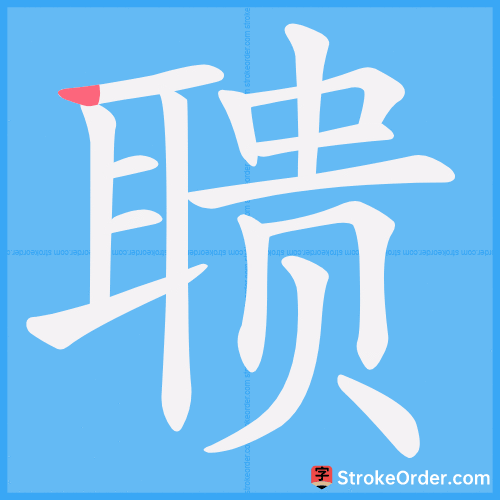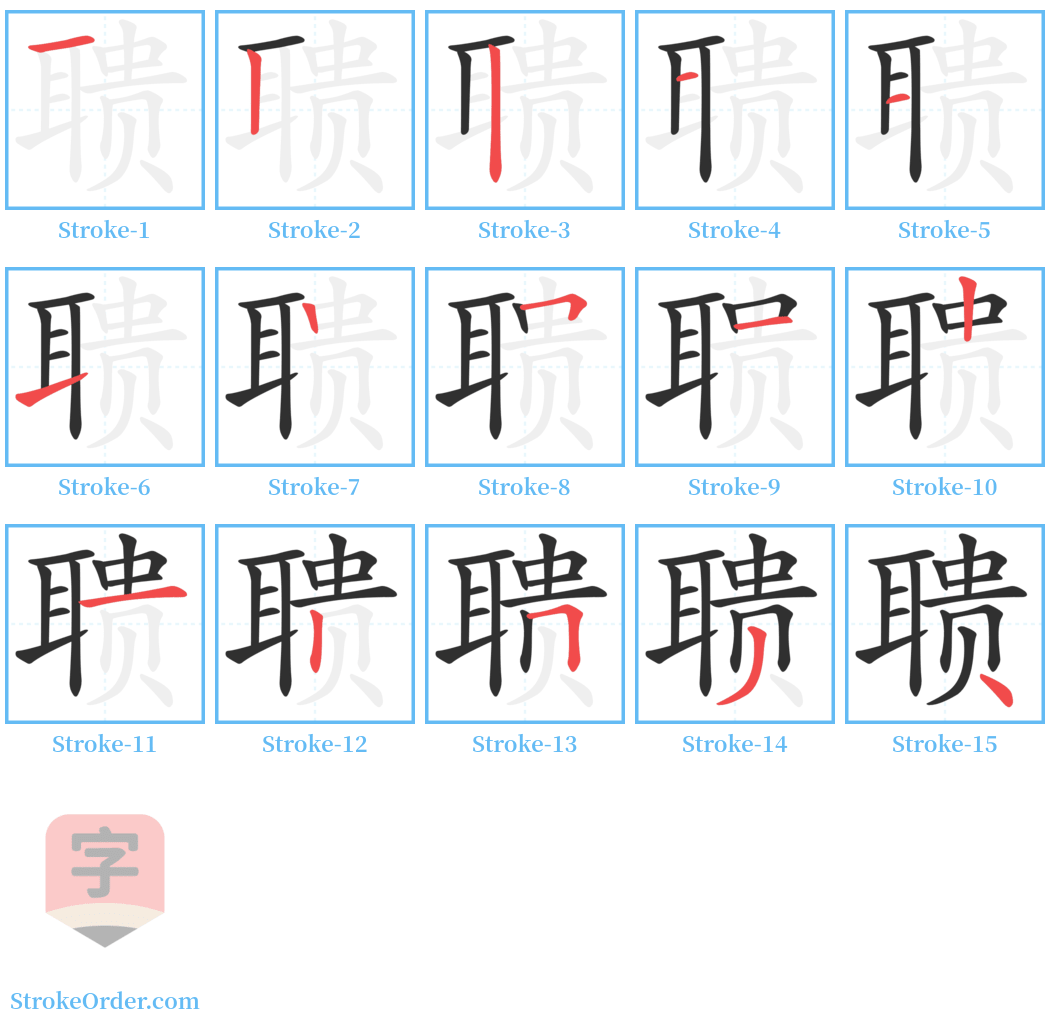聩 Stroke Order
Animated Stroke Order of 聩

Stroke Order Diagrams for 聩

Step-by-Step Handwriting Guide for 聩

Learn to Write Chinese Characters with Video Tutorials
Watch the video of writing the Chinese character "聩", learn the correct stroke order (笔顺) of the character "聩", and master the standard way of writing the character "聩".
Free Printable Handwriting Practice with Stroke Order: 聩
Printable Writing Practice Worksheet of "聩" in Portrait Orientation (Tian Zi Ge)

Printable Writing Practice Worksheet of "聩" in Landscape Orientation (Tian Zi Ge)

Information of 聩
Pinyin
kuì
Radical
耳
Strokes
15 strokes
Usage
★★★★
Definition
born deaf / deaf
聩 kuì
1. 聋。
[English] Deaf.
2. 聋:昏~。发聋振~(亦称“振聋发聩”)。
[English] Deaf: muddle-headed. To become deaf and understand the deafness (also known as "to awaken the deaf").
3. 先天性耳聋。后泛指耳聋。
[English] Congenital deafness. Later refers to deafness in general.
4. 昏聩,不明事理。
[English] Muddle-headed, lacking understanding of matters.
引例:
1. 《说文》:聩,生而聋也。从耳,贵声。
[English] "Shuo Wen": Kuì, born deaf. From 'ear', with an emphasis on sound.
2. 《东坡志林》:蕲州庞君 安常善医则聩。
[English] "Dong Po Zhi Lin": Pang Jun from Qizhou, when at ease, is proficient as a doctor and thus he is deaf.
3. 《国语·晋语四》:聋聩不可使听。
[English] "Guo Yu, Jin Yu Si": The deaf and dumb should not be made to listen.
例子:
- 又如:聩眊(耳聋眼花。引申为昏聩)
[English] Such as: kuì mào (deafness and dim vision. Extended meaning is muddle-headedness).
引例:
1. 皮日休《耳箴》:近愚则聩。
[English] Pi Rihiu's "Ear Admonition": Near foolishness leads to deafness.
2. 孔尚任《桃花扇》:开聋启聩。
[English] Kong Shangren's "Peach Blossom Fan": To open the deaf to understanding.
例子:
- 又如:聩聩(胡涂无知,不明事理)
[English] Such as: kuì kuì (confused and ignorant, lacking understanding of matters).
Input Method for 聩
Pinyin
kui4
Wubi
bkhm
Cangjie
sjlmo
Zhengma
ceal
Four Corner
15482
Unicode
U+8069
Same Pronunciation Characters